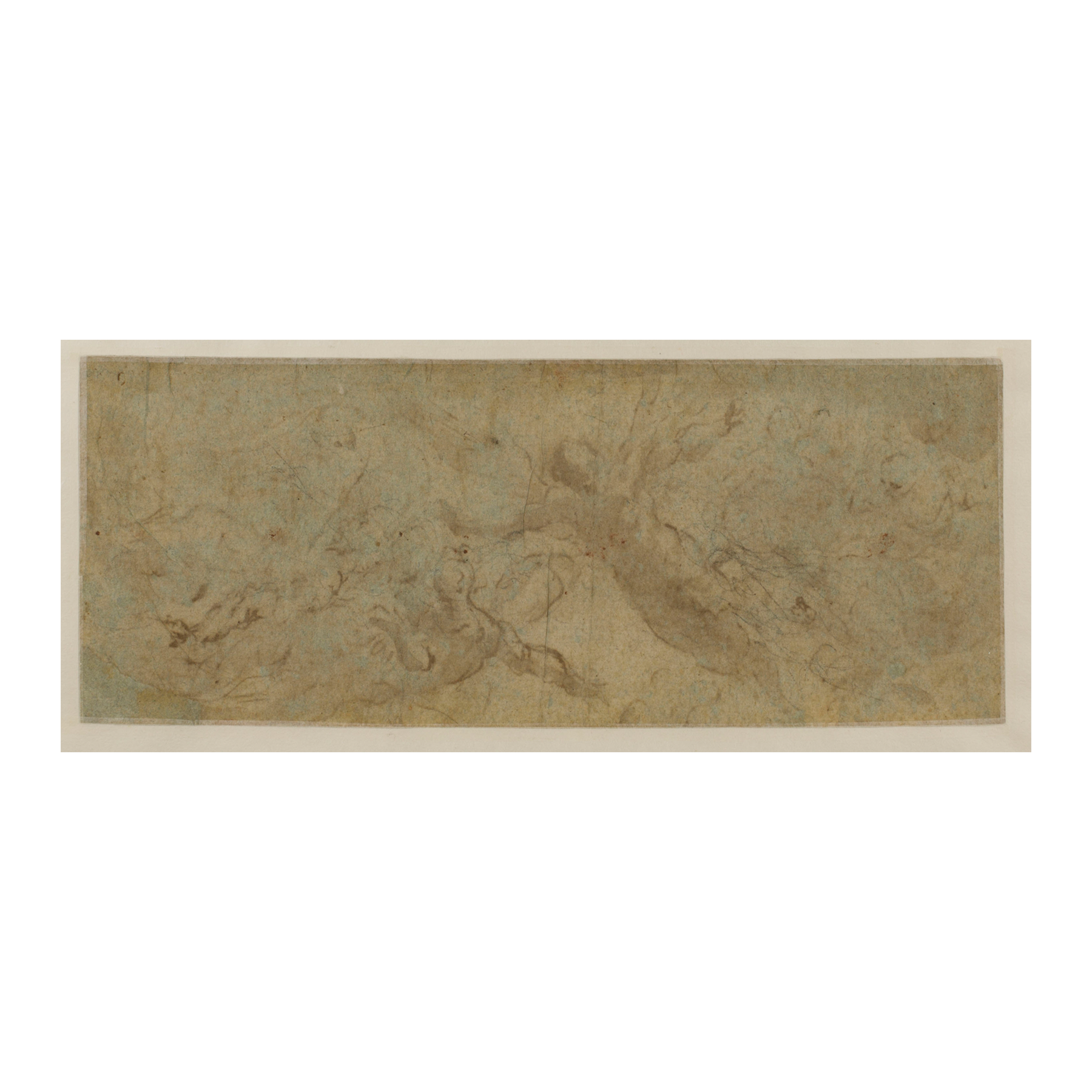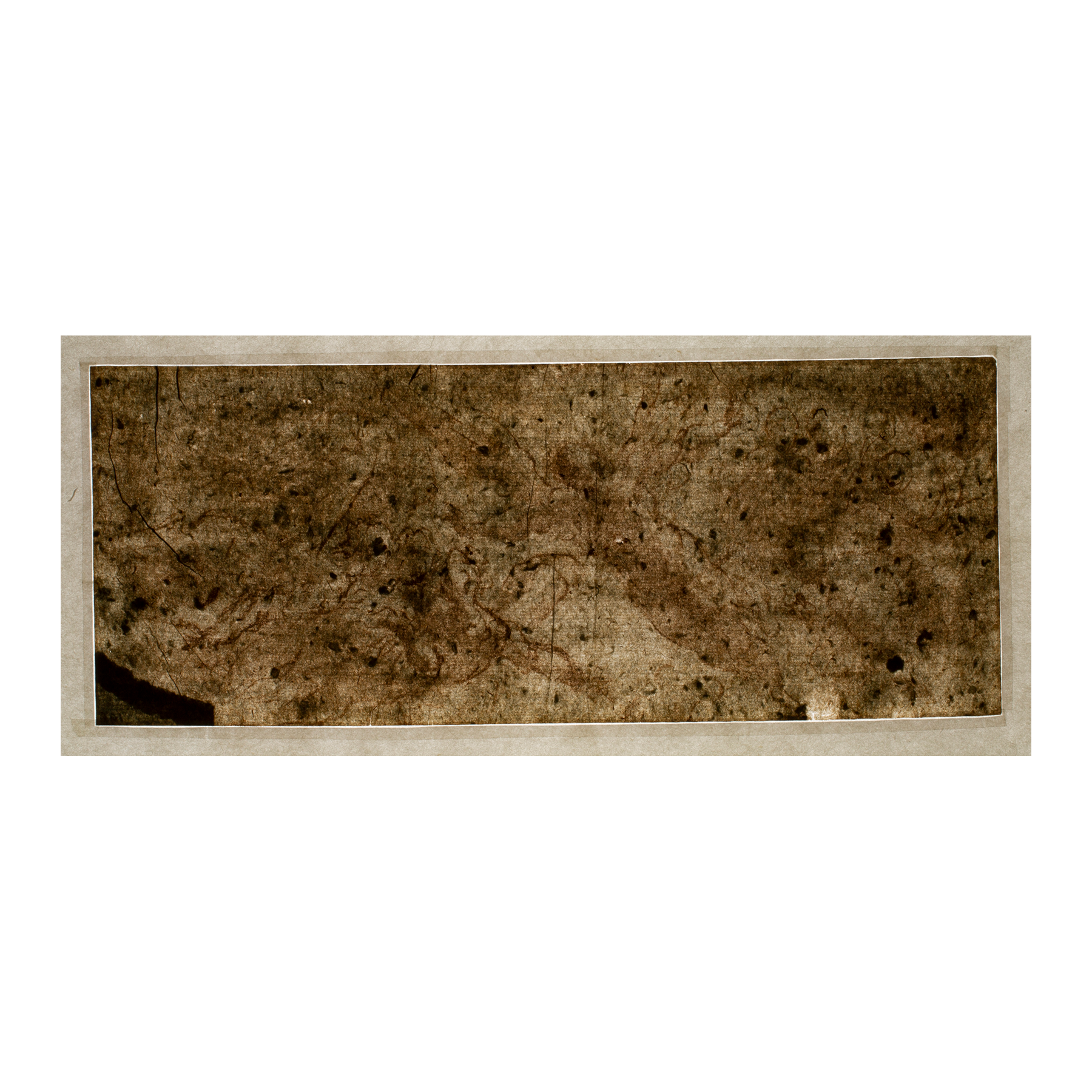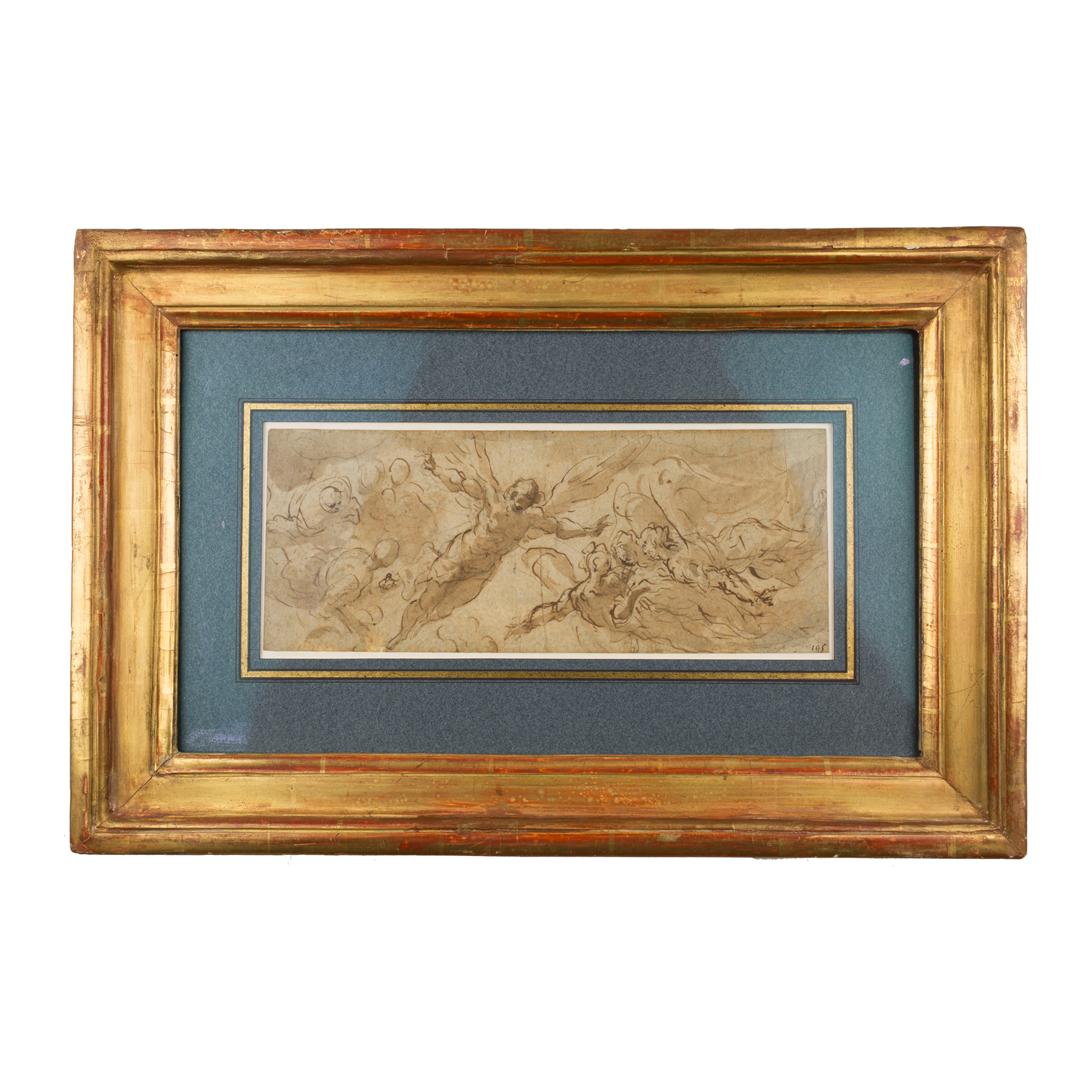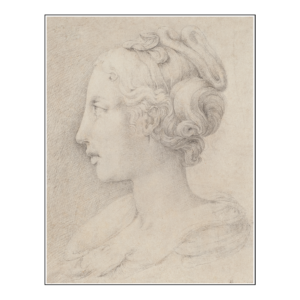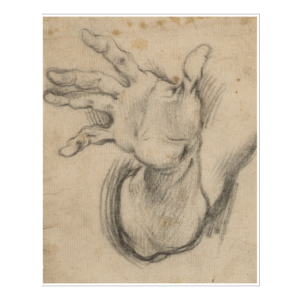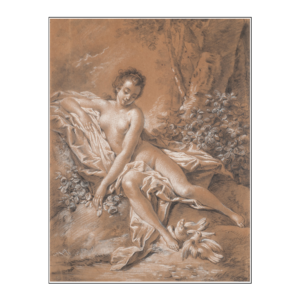Jacopo Negretti, known as Palma Il Giovane
Venice, 1544-1628
Swarm of angels
Pen, brown ink and wash of brown on lines of black chalk.
110 x 277 mm – 4 5/16 x 10 7/8 in.
Numbered, in pen and black ink, lower right 195.
Provenance – Paris, Artesepia gallery, 2012 – Paris, private collection.
Coming from a family of artists, Jacopo Negretti known as Palma il Giovane received artistic training very early on from his father Antonio and his great-uncle Palma il Vecchio. Sent to Rome by his first patron, Guidobaldo II della Rovere, Duke of Urbino, he learned about painting by studying works by Michelangelo and Mannerist painters such as the Zuccari brothers between 1568 and 1572. Returning to Venice, very influenced by Titian and Tintoretto, he obtained his first public commission after the fire of the Doge’s Palace in 1577: the execution of several paintings for the ceiling of the Grand Council Hall. After the death of the great Venetian masters – Titian, Veronese and Tintoretto – he took a preponderant place in the Serenissima and was entrusted with the main projects implemented in the city and in Veneto between 1580 and 1620.
The graphic corpus of Palma Il Giovane is very broad and varied. This drawing is part of the sheets that the artist creates as a first thought, favoring the pen as a medium to set up his composition, quickly sketching the characters with small looping movements, schematizing the shapes while controlling the space and suggesting depth thanks to the touches of wash (like in the sheet Group of varied figures, New York, The Metropolitan Museum, inv. 1996.571).
A great representative of Venetian mannerism, Palma il Giovane draws bodies in a slender manner and accentuates their twisting. In this study of angels flying on clouds, we perceive how the artist is marked by the works of Tintoretto, and more particularly by the characters who animate the immense canvas of the Paradise decorating the Grand Council Hall of the Doge’s Palace in Venice.
Condition report – Old folds in the center and right part of the drawing (which do not hinder readability)


